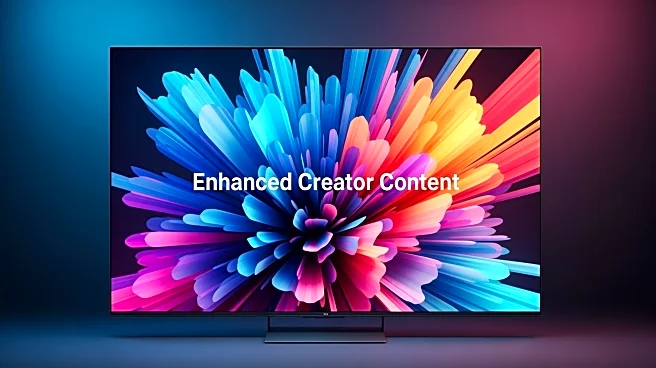What's Happening?
YouTube Premium is a subscription service that enhances the YouTube experience by offering ad-free videos, background playback, and offline viewing. The individual membership costs $13.99 per month, with
options for annual, family, and student plans. The family plan, priced at $22.99 per month, allows sharing with up to five family members. YouTube Premium includes access to YouTube Music Premium, providing an ad-free music experience. The service aims to improve user satisfaction by eliminating interruptions and offering additional features like background play and video downloads.
Why It's Important?
YouTube Premium's ad-free experience is a significant draw for users who frequently encounter ads on the platform. By removing ads, YouTube Premium enhances the viewing experience, making it more appealing to users who value uninterrupted content. The inclusion of YouTube Music Premium adds further value, catering to music lovers who seek seamless playlists. This service reflects a broader trend towards subscription-based models in the digital content industry, potentially influencing other platforms to offer similar ad-free options. The shift may impact advertising revenue and content creators, prompting discussions on alternative monetization strategies.
What's Next?
As YouTube Premium continues to attract subscribers, the platform may introduce additional features or exclusive content to differentiate itself from competitors. The success of the service could lead to further expansion of subscription offerings, potentially influencing the digital content landscape. Content creators may need to adapt to changing revenue models, exploring sponsorships or exclusive deals to compensate for reduced ad revenue. The impact on advertising strategies and user engagement will be closely monitored as the subscription model gains popularity.
Beyond the Headlines
The rise of YouTube Premium highlights a shift towards personalized and uninterrupted digital experiences. This trend raises questions about the future of advertising and its role in content monetization. As more users opt for ad-free services, content creators may need to explore alternative revenue models, such as sponsorships or exclusive content deals. The ethical implications of ad-free viewing, particularly in terms of content accessibility and creator compensation, will continue to be a topic of discussion.











